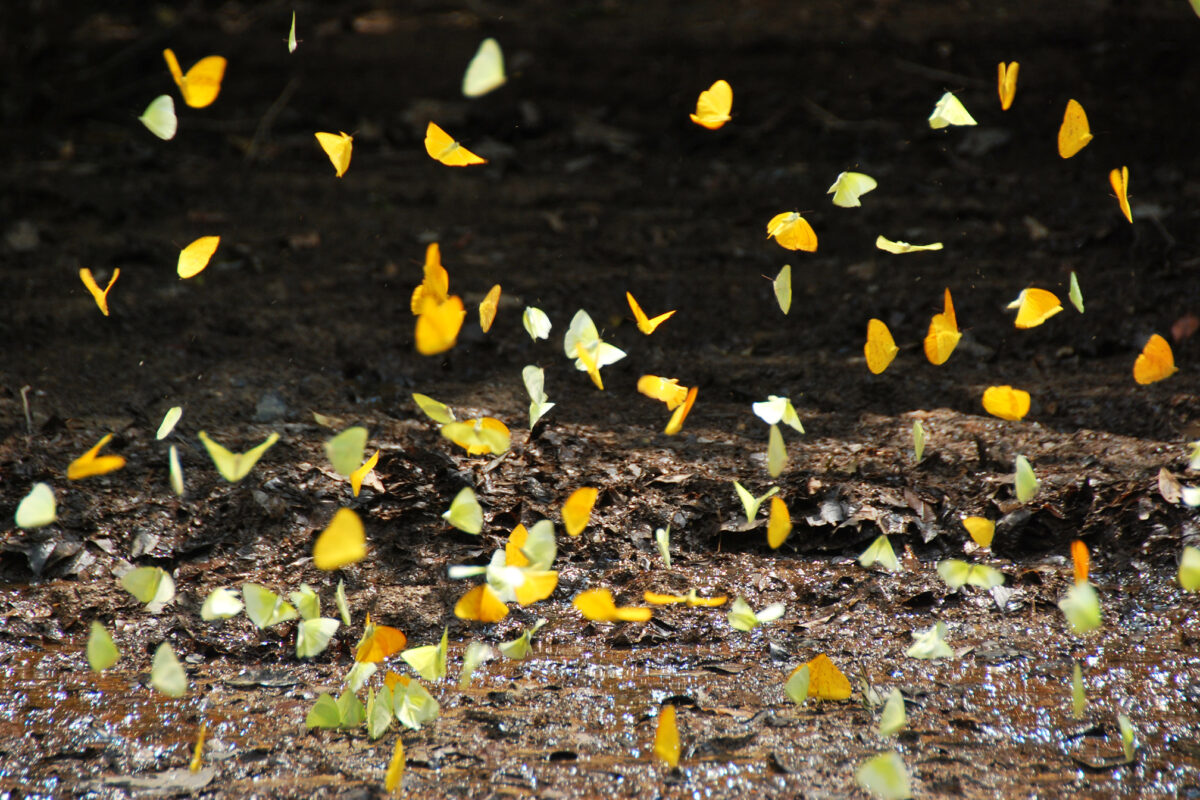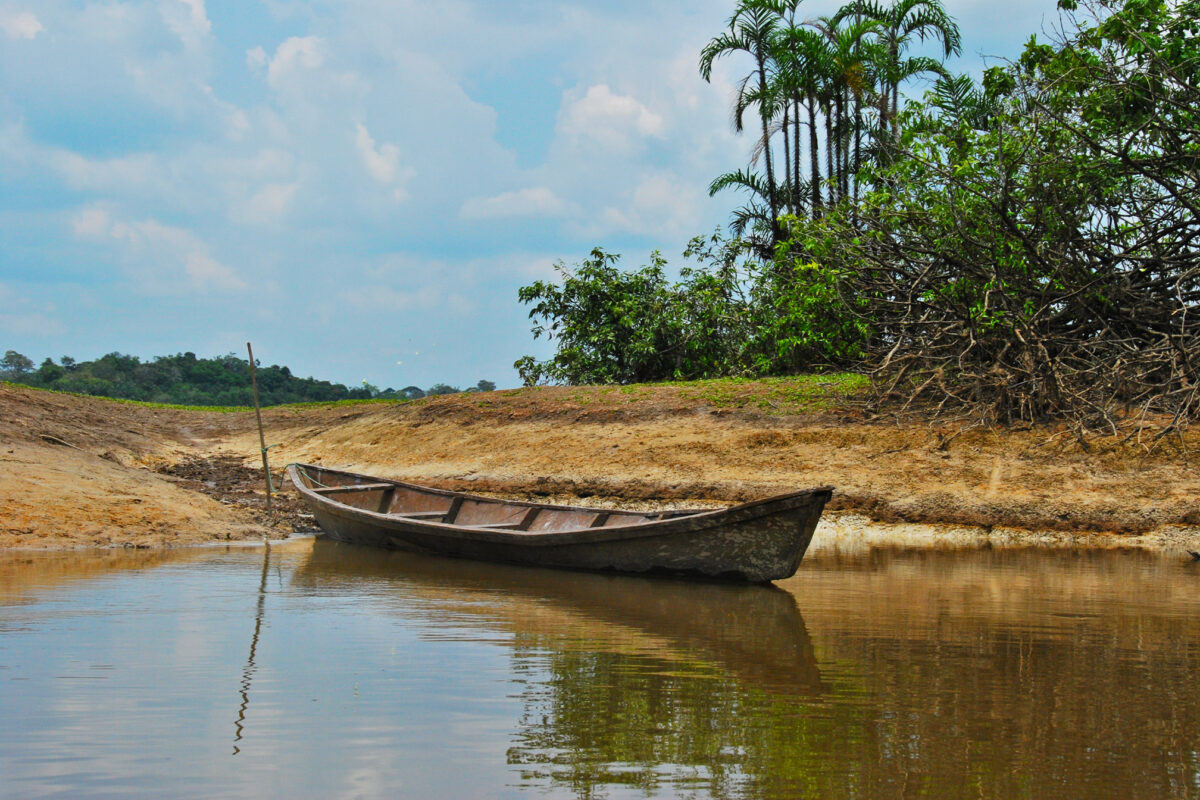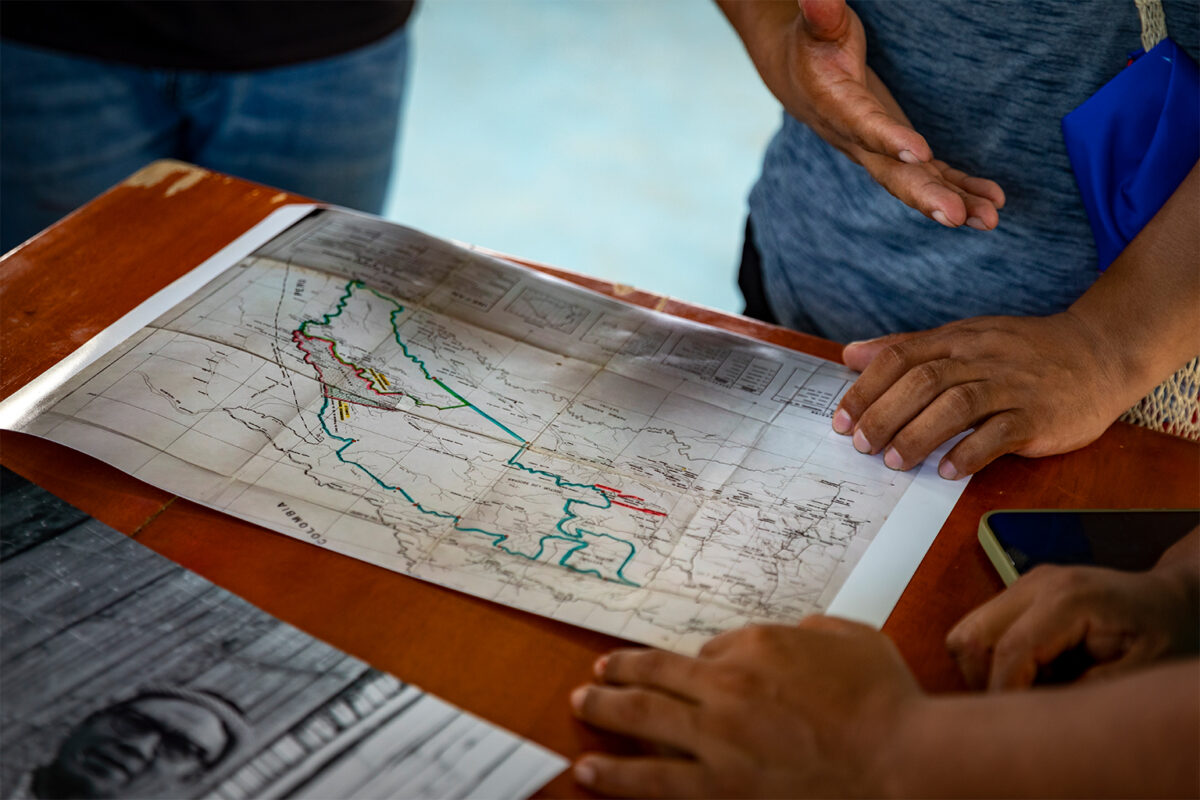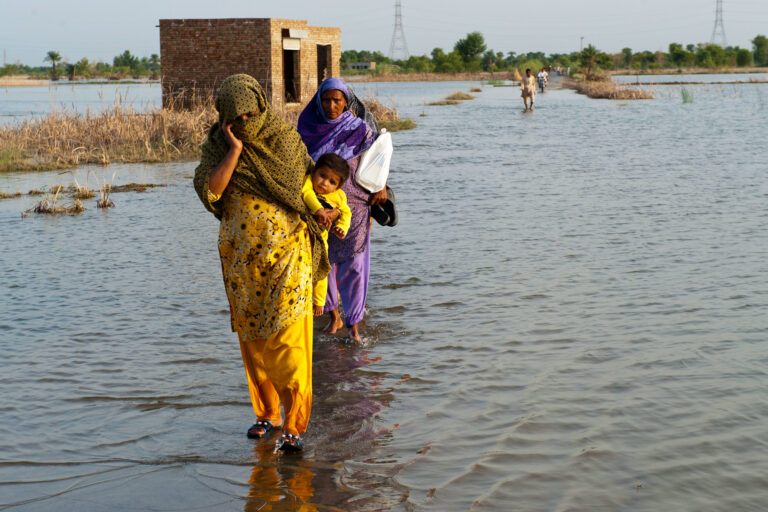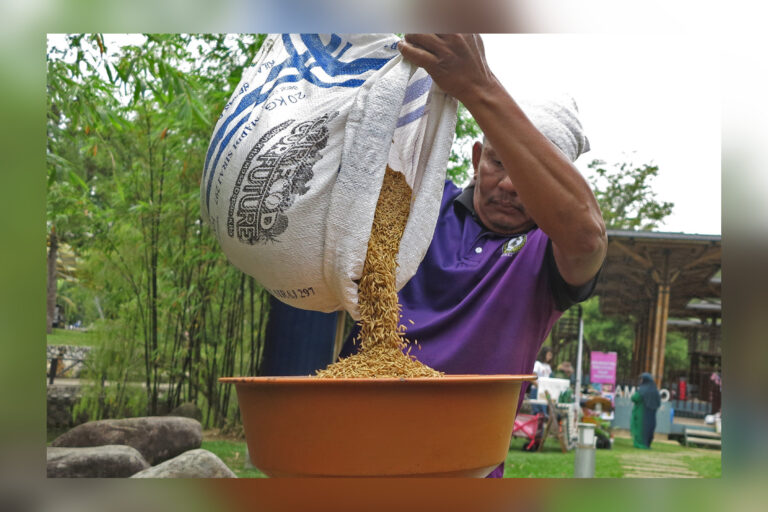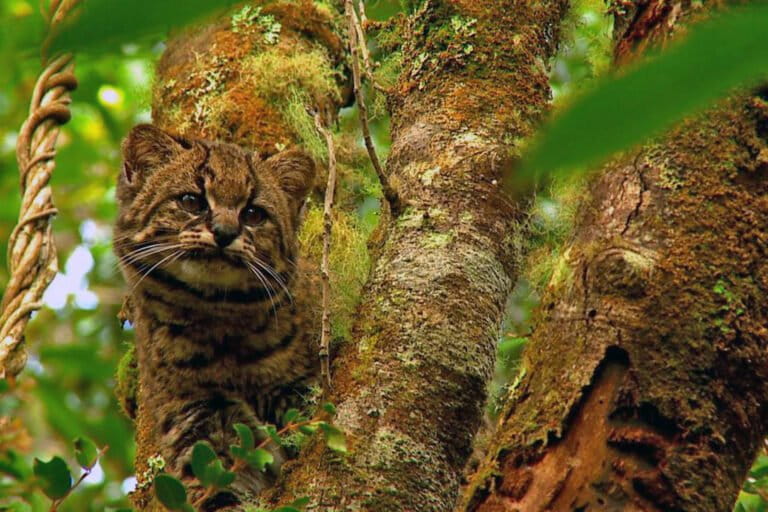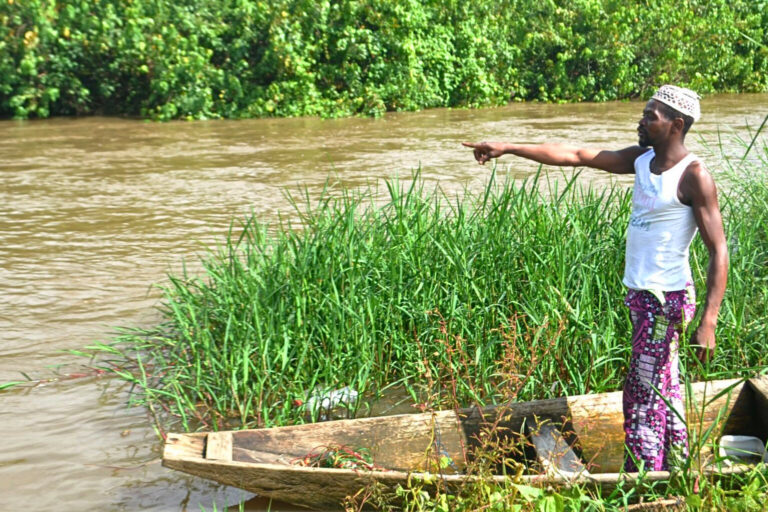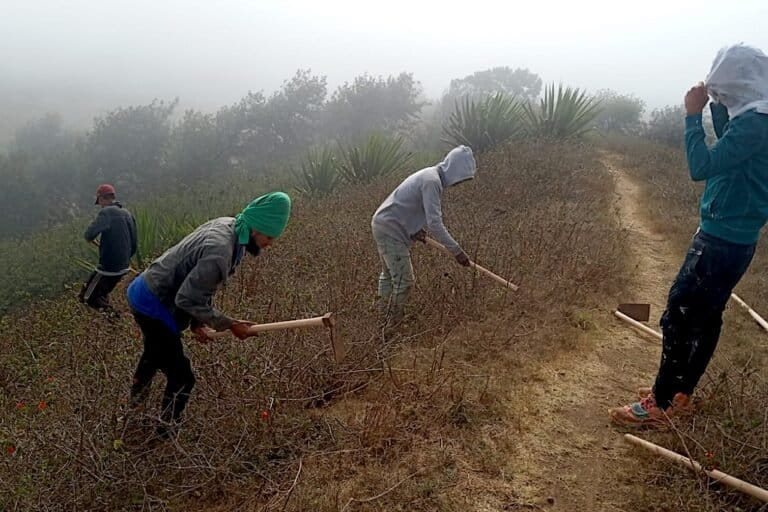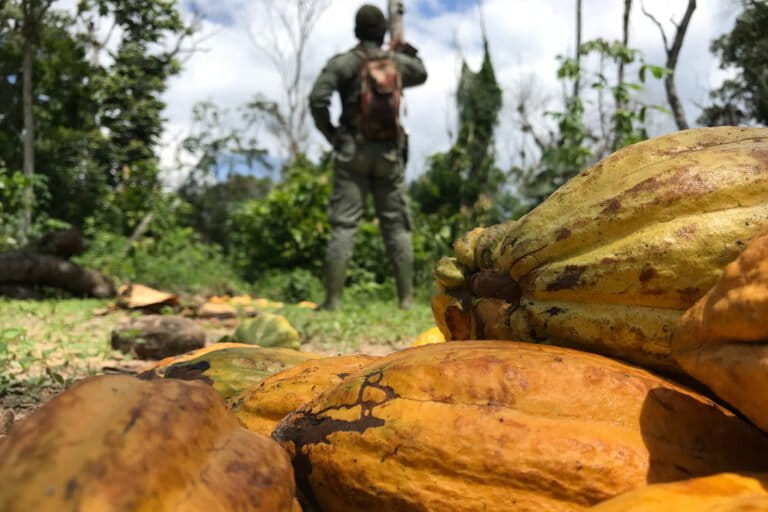- The largest dam-removal project in history was completed in October, freeing 676 kilometers (420 miles) of the Klamath River and its tributaries in California and Oregon.
- The project involved removing four dams, built between 1918 and 1964 to provide electricity. They had devastating effects on salmon populations and tribal communities, leading to a decades-long, tribe-led movement for their removal.
- The $450 million project involved complex engineering to remove the dams and, now, to restore the river ecosystem, including replanting native vegetation and reshaping the river channel, incorporating tribal knowledge to improve habitats for salmon and other species.
- The first chinook salmon in more than 60 years are already spawning above the former Iron Gate dam and a fall-run Chinook salmon was identified in Oregon for the first time in more than 100 years. Experts expect coho salmon populations to recover in six to 12 years and Chinook salmon in 15 to 20 years in what was once the third-largest salmon producing river in the contiguous U.S.
KLAMATH, CALIFORNIA—Brook M. Thompson was just 7 years old when she witnessed an apocalypse.
“A day after our world renewal ceremony, we saw all these fish lined up on the shores, just rotting in piles,” says Thompson, a Yurok tribal member who is also Karuk and living in present-day Northern California. “This is something that’s never happened in our oral history, since time immemorial.”
During the 2002 fish kill in the Klamath River, an estimated 30,000 to 70,000 salmon died when the U.S. Bureau of Reclamation diverted water to farms instead of letting it flow downstream. This catastrophic event catalyzed a movement to remove four dams that had choked the river for nearly a century.
Now, that decades-long tribal-led movement has finally come to fruition. As of Oct. 5, the four lower Klamath hydroelectric dams have been fully removed from the river, freeing 676 kilometers (420 miles) of the river and its tributaries. This is the largest dam-removal project in history.

“This has been 20-plus years in the making, my entire life, and why I went to university, why I’m doing the degrees I’m doing now,” says Thompson, who is an artist, a restoration engineer for the Yurok Tribe and pursuing a Ph.D. in environmental studies at the University of California, Santa Cruz.
“I feel amazing,” Thompson tells Mongabay at the annual Yurok Salmon Festival in Klamath, California, in late August, just weeks before the river was freed. “I feel like the weight of all that concrete is lifted off my shoulders.”
A river dammed
The Klamath River stretches 423 km (263 mi) from its headwaters in southern Oregon to the Pacific Ocean just south of Crescent City, California. It was once the third-largest salmon-producing river in the contiguous U.S., sustaining tribes for centuries and later also supporting a thriving recreational and commercial fishing industry.
Six Klamath River dams were built by the California Oregon Power Company (now Portland, Oregon-based electric company PacifiCorp) in the 20th century. The four lower dams, built to generate hydroelectric power, were Copco No. 1, completed in 1918, followed by Copco No. 2 in 1925, the J.C. Boyle Dam in 1958, and Iron Gate Dam in 1964.
At the time, they were seen as marvels of engineering and progress, promising cheap electricity to fuel the region’s growth. Together, these four dams could generate 163 megawatts of electricity, enough to power roughly 70,000 homes and drive development in the remote territory.

However, the dams came at a tremendous cost to the river’s ecosystem and the Karuk, Yurok, Shasta, Klamath and Modoc tribes who have depended on its salmon since time immemorial.
In the decades after dam construction, the river’s once-thriving ecosystem began to collapse and salmon populations plummeted. In 1997, coho salmon (Oncorhynchus kisutch) in the Klamath were listed under the federal Endangered Species Act.
The life cycle of salmon is tied to the free flow of rivers. These fish are born in freshwater streams and migrate to the ocean, where they spend most of their adult lives, and then return to their natal streams to spawn and die. This journey, which can span thousands of miles, is crucial for the genetic diversity and resilience of salmon populations.
Dams disrupt this natural cycle by blocking access to spawning habitat, altering water temperatures, and degrading water quality. On the Klamath, salmon lost hundreds of miles of habitat. Worldwide, not just salmon, but many other migratory fish species such as trout, herring, eels and sea lamprey are blocked by dams.


“The dams were like a blockage in the river’s arteries. They stopped the flow of life, not just for the fish, but for our people too,” Ron Reed, a traditional Karuk fisherman and cultural fire practitioner, tells Mongabay. He recalls the stark decline in fish populations during his lifetime.
“As I grew up, the fish catching down here became almost nonexistent. At some points I was catching maybe 100 fish in a year,” Reed says. “At the time the Karuk Tribe had more than 3,000 members. That’s not enough for anything. Not even everybody gets a bite.”
Commercial and recreational fishing also took a hit over the years. “Back in the mid-1900s, the Klamath River was known as the single most revered fly-fishing river in California,” Mark Rockwell, vice president of conservation for the Montana-based NGO Fly Fishers International, which supported the dam removal efforts, said in a statement. “Fly fishers came from all over the U.S. and other countries to experience the historic fishery. All that was lost because of the dams and the damage & disease they brought to the river.”


For the tribes, the impact of the dams went beyond fish. The dams created large reservoirs that flooded ancestral lands and cultural sites, particularly village sites and important ceremonial areas of the Shasta Indian Nation in the upper Klamath.
Reed also shared memories of the dangers posed by the dams farther downstream in Karuk territory. “When I was growing up, we were not allowed to go to the river. Before Iron Gate Dam was put up [to control flows from the Copco dams] you had that surge when they made electricity and that fluctuation was up to 3 feet,” he said. “We were losing people along the river. There are stories of our people drowning.”
The movement to undam the Klamath
The fight to remove the four lower Klamath dams began in earnest in the early 2000s, led by the Yurok, Karuk and Klamath tribes. After the 2002 fish kill made national news, the campaign to remove the dams grew beyond a local issue into a national movement supported by environmental NGOs and pro-fishing groups in California and beyond, such as American Rivers, Ridges to Riffles Conservation Group, California Trout, Save California Salmon, and the Native Fish Society.
In 2004, Tribal members and their allies traveled to Scotland to protest Scottish Power, which owned the dams at the time. The Scottish people rallied in support of the protesters, and in 2005 Scottish Power transferred ownership back to PacifiCorp, a subsidiary of Warren Buffett’s Berkshire Hathaway Energy. Protesters then took their message to shareholder meetings in Omaha, Nebraska.
Those in favor of dam removal argued that dams had been catastrophic for the ecosystem. The lower dams provided no irrigation, drinking water or flood control. Electricity from the dams did not go directly to local residents but was channeled into the Pacific power grid, which powers homes as far north as Vancouver, British Colombia, and as far south as Baja California. And finally, it would cost more to bring the dams up to modern standards than to remove them.

On the other hand, residents of the Copco community stood to lose the Copco Reservoir, a lake used for recreation and a tourism draw for the area. Others feared loss of energy and water quality problems. The campaign to remove the Klamath dams faced numerous challenges, including entrenched economic interests, local opposition, and complex regulatory hurdles.
Dam removal advocates overcame these obstacles through persistent grassroots organizing, alliances between tribes and environmental groups, and media campaigns that brought national attention to the scientific evidence about the dams’ negative impacts on salmon populations and water quality.
But what really made a difference was proving that removing the dams would cost less than fixing them up.
PacifiCorp and its parent company, Berkshire Hathaway Energy, initially resisted removal, but gradually shifted their stance as the financial and regulatory landscape changed. The turning point came when advocates demonstrated that removal could cap PacifiCorp’s liability and potentially save ratepayers money in the long term.

In 2016, after much negotiation, PacifiCorp agreed to transfer the dams to the Klamath River Renewal Corporation (KRRC), a nonprofit organization created specifically to take ownership of the dams and oversee their removal. By agreeing to transfer the dams to KRRC, PacifiCorp found a way to get rid of money-losing properties while avoiding uncertain future costs and risks.
In 2022, the Federal Energy Regulatory Commission (FERC) approved the plan, paving the way for the largest-ever dam removal and river restoration project not just in the U.S., but in the world.
Ultimately, dam removal and river restoration came with a price tag of approximately $450 million, funded through a combination of surcharges on PacifiCorp customers and California state bond money. Although Pacificorp hasn’t provided an official cost estimate, they have said it would have cost a great deal more to keep the dams operating safely.
Removing mountains of concrete and earth
Removing four massive dams is no small feat. The process involved years of planning, environmental impact studies, and complex engineering work.
“Removing a dam is like performing open-heart surgery on the landscape,” says Dan Chase, a fisheries biologist with Resource Environmental Solutions (RES), the company contracted to handle the restoration work. “You have to be incredibly careful and precise, or you risk causing more harm than good.”
The physical removal of the dams began in mid-2023 and concluded in October 2024. It was a carefully orchestrated process that involved slowly draining reservoirs, demolishing concrete structures, scooping away the earthen dams, and managing the release of decades of accumulated sediment.

The removal of the dams occurred in a staggered sequence, beginning with the smallest dam and progressing to the larger ones. Copco 2, the smallest, was the first to be fully removed, with the process completed in October 2023.
This was followed by the initiation of drawdown (the controlled release of water) for the large reservoirs behind the three remaining dams, Iron Gate, J.C. Boyle and Copco 1, in January 2024.
The first step was to breach the dam (either with explosives or using existing openings) and lower the water level in the reservoir behind it. This was done gradually to minimize erosion and downstream damage. Contractors used special water tunnels and diversions to control water release.

Ren Brownell, the public information officer for KRRC, describes the day she watched the waters of the Iron Gate reservoir, tinged electric green from toxic algal blooms, drain in just 17 hours.
“It was like watching 10,000 years of geology in a matter of a week. [The sediment] washed away and eventually the Klamath River was revealed,” Brownell, who grew up in the area, tells Mongabay. “I end up looking back on that period as one of my favorite times on the project, because I got to watch a river come back to life and just reveal itself.”
Decades worth of sediment had accumulated behind the dams, most of which was washed downstream by the draining of the reservoirs. Although the river was extra muddy and turbid after each dam removal, experts view this as a positive sign of the ecosystem reclaiming its natural state.

With the water levels lowered, heavy machinery moved in to begin breaking apart the concrete structures. Kiewit, the contractor KRRC hired to complete the deconstruction elements of the project, used hydraulic hammers, explosives, and other specialized equipment to demolish the dams, piece by piece.
According to KRRC, the concrete was buried onsite and the earthen material was returned to nearby areas, ideally where it had been originally removed from to build the dams. Hazardous materials were hauled offsite to appropriate facilities and metals were recycled.
Restoring an ecosystem
RES, who is overseeing restoration, now faces the monumental task of restoring the river channel and the 890 hectares (2,200 acres) of land that were once submerged beneath reservoirs.
“It’s not enough to just take out the dams,” says Chase, the RES fish biologist. “We need to help jump-start the ecosystem’s recovery.”
This effort began years before the dams were removed. In 2019, crews of primarily Yurok tribal members began a massive effort to gather seeds from native plants in the surrounding areas, including oak trees, poppies and various grasses.
“We had crews out collecting native seeds, with close to 100 different species collected from the area that we then took to commercial nurseries to grow and harvest and grow out again to the point where we’re now in the neighborhood of 17 to 19 billion native seeds,” says David Meurer, director of community affairs for RES.


A combination of hand seeding and helicopter seeding occurred at all three major reservoir footprints: Copco 1, Iron Gate and J.C. Boyle. (The smaller Copco 2 dam had impounded just a narrow, rocky area that only needed to be reshaped, according to RES.) The first round of seeding served to stabilize the sediment and improve soil. RES says this was a success, though there have been some challenges and surprises, including some rogue horses.
“We did not expect a huge and ever-increasing herd of horses who obviously are going to prefer our forage, which is green and lush, to what they saw in the surrounding hillside,” Meurer says. To address this unwanted grazing, RES is installing a rather long and costly fence around the planted areas.
As the dams came down, crews also began restoring the natural river channel. RES worked with a Yurok construction company to help direct the stream back toward its historic alignment. The team is still fine-tuning the river’s path, using plane-mounted lidar laser imaging to map and guide their work.

The return of the salmon
Down a gravel road in Northern California, through a thicket of willow trees, around big boulders, and over smooth cobbles, is the place the Karuk Tribe calls the center of the world. A massive wedge of stone, a mini-mountain, stands guard over a section of the Klamath River rife with riffles and rapids.
On the river’s edge, Reed sits atop a massive boulder, praying. A white bird traces slow circles overhead. It’s later summer, a season of ceremony for the tribes. The world renewal ceremony is tied to the upstream migration of salmon.
Reed, a tribal elder, hops spryly across boulders to the base of a small rapid. With practiced movements, he swoops the end of a traditional dip net, a 15-foot loop of willow tree branch with a net at the end, into the whitewater.

Within seconds, a fat salmon thrashes in the net. Reed and Sonny Mitchell Jr., a Karuk fisheries technician, let out shouts of celebration. This was the first fall Chinook salmon (Oncorhynchus tshawytscha) of the season. They carry the fish back to a congratulatory crew and carefully clean it in a trickle of fresh water.
“We’re eating well tonight,” Mitchell says.
Because of their cultural and economic status, restoration efforts cater largely to the needs of the fish. As the physical landscape transforms post-dam removal, eyes are on the river’s iconic salmon.
“We’re already seeing positive changes,” Toz Soto, fisheries program manager for the Karuk Tribe, said, just weeks before the dam removal was complete. “Water temperatures are more natural, sediment is moving downstream as it should, and we expect fish to start to explore areas they haven’t been able to reach in generations.”
This expectation has already become a reality. According to the Oregon Department of Fish and Wildlife, “On October 16, a fall-run Chinook salmon was identified by ODFW’s fish biologists in a tributary to the Klamath River above the former J.C. Boyle Dam, becoming the first anadromous fish to return to the Klamath Basin in Oregon since 1912 when the first of four hydroelectric dams was constructed, blocking migration.”
And a post by Swiftwater films, the official documentary crew for the project stated, “The first chinook salmon in over 60 years are officially spawning above the former Iron Gate dam on the Klamath, just two weeks after construction wrapped on dam removal…The fish are bright, strong and beautiful. What an incredible few days and a testament to the resilience of salmon.”

To improve salmon habitat, the RES team is adding structures to the river and its tributaries, such as fallen trees, to create pools and riffles the salmon require for spawning. They’re also installing what they call “beaver dam analogs,” structures of wood or rock pounded in along streams to slow the water down and catch sediment.
The removal of the Klamath dams will help many types of fish, says Shari Witmore, a fisheries biologist with the National Oceanic and Atmospheric Administration (NOAA), who is studying salmon and other fish in the river, told Mongabay. The coho salmon, which are threatened with extinction, will gain about 122 km (76 mi) of river to live in. The project might also bring back spring Chinook salmon, which used to be common in the upper river but have nearly disappeared.
“What we’ve seen in other dam removals is that it takes about three to four [salmon] generations for salmon populations to become sustainable,” Witmore says. “And so for Chinook salmon, that’s 15 to 20 years, and for coho salmon, that’s six to 12 years.”
Pacific lamprey (Entosphenus tridentatus), another culturally important species for the tribes, and steelhead (O. mykiss irideus) will gain access to an additional 644 km (400 mi) of river. These fish can swim in faster-moving water than salmon. With more places to live and breed, all these fish species should have a better chance of survival.
And, of course, the whole ecosystem will benefit, says Chase of RES. “We have northwestern pond turtle. We have freshwater mussels. There’s beaver out there. We’ve been seeing river otter foraging … it goes on and on.”

Tribal knowledge and collaboration
The restoration of the Klamath River has been aided by tribal knowledge, sometimes referred to as traditional ecological knowledge (TEK) or, as Reed calls it, “place-based Indigenous science.”
“Certainly, the place-based knowledge component has been vital to us,” Chase says. “Thinking about the species of plants to use, where they’re occurring on the landscape, what species are culturally significant and important that need to be included. That’s been an element of refining and improving our restoration work.”
On the fisheries side, Chase says, the tribes have shared an immense amount of information with the RES team on how fish move through the landscape, the habitats they use, and the ways the different life stages respond to various environmental factors.
One example is related to off-channel habitats, places off the main river stem where fish can go in the winters when stream flow is faster and in the warm summer when cover and food are critical. Tribal knowledge about how to create and enhance these features, and how fish interact with them, has helped RES to restore historic salmon habitats.

Healing rivers, healing people
“The decline of salmon has been linked to higher rates of diabetes and heart disease in our communities,” says Thompson, the Karuk and Yurok restoration engineer and Ph.D. student. “Their return is quite literally a matter of life and death for us.”
The removal of the Klamath dams is a step toward healing historical wounds inflicted on the Native American tribes of the region through decades of genocide and colonialism, according to Thompson and Reed.
However, the fight to remove the dams has taken a toll on those involved. Reed speaks candidly about the mental health challenges he and others have faced during the long struggle.
“I almost lost my family. You’re gone trying to fix the world. I’m going to Scotland. I’m going to wherever, whenever, however. It’s hustle, hustle, hustle. Meanwhile, my wife’s home with six children.” Eventually, he says, “I broke down, suffered depression … I just happened to have a good, strong family that allowed me to kind of come out of it.”
Reed and hundreds of others persevered. “We’re not just fighting for ourselves,” Reed says. “We’re fighting for our children, our grandchildren, and the salmon themselves.”
“These salmon were taken care of by my ancestors, who I had never met and never had contact with myself,” Thompson says. “The salmon are like love letters sent into the future where the love and effort put into the salmon were done so that I could have a good and healthy life.”

Challenges remain
For the Klamath region, the challenges are far from over. Climate change, wildfires, and the legacy of more than a century of colonialism and ecological disruption still pose significant threats.
“There’s been so much degradation over the last 100-plus years from agriculture, forestry, water diversion and grazing,” says Mark Buettner, director of the Klamath Tribe’s Ambodat Department, which is responsible for aquatic resource management in the Upper Klamath Basin.
There are still two smaller dams in the upper Klamath River in Oregon: the Keno and Link River dams. These aren’t hydropower dams, unlike the four that were removed; they provide flood control and water for agriculture, and there’s currently no plan to remove them.
“I want to emphasize that we’re happy that salmon will be back, but we’re not really ready for them,” Buettner adds. “Sure, the fish have free access to the upper basin, but the upper basin habitats aren’t optimal. Young fish could be diverted into irrigation diversions. The Keno dam needs a new fish ladder.”
As I pass through Karuk territory in late August, traveling west toward the ocean, the air is heavy with smoke and fire crews pass regularly in their trucks, serving as a stark reminder of the work that still lies ahead. This includes addressing more than 150 years of colonial fire suppression practices, Reed says.


“When settlers first arrived in the Klamath region of what is now Northern California, they found forests with enormous trees, wooden homes and structures, acorn orchards, abundant plants, berries, fish, wildlife and clean water. All of it was made possible by Indigenous peoples’ frequent use of fire on the landscape,” Russel Attebery, chair of the Karuk Tribe, writes in a opinion piece for news outlet CalMatters. “California is not just fire-adapted, it is fire dependent.”
However, these controlled or cultural burns were outlawed in 1850 and are still “unjustly criminalized,” Attebery writes. The lack of prescribed burns, coupled with warmer and drier conditions from climate change, has led to more severe and frequent wildfires.
Wildfires are taking a toll on the Klamath River. Debris flow from last year’s McKinney Fire killed thousands of fish. Fires can heat up the river, making it too warm for cold-water fish like salmon. They also send silt and ash into the water, which can choke fish and smother their eggs. Sometimes, the erosion from fires even changes the river’s path. The ecosystem evolved with fire, but not at the frequency and severity of modern fires.
Reed and other traditional fire practitioners are being asked by academics and fire-management agencies to advise on traditional burning practices, and restore balance.
The irony of Native peoples being asked to consult on how to restore the land that was stolen from them isn’t lost on Reed. “I think we’re leading the nation with teaching cultural fire, through a faith-based process and hopefully this co-production of knowledge,” he says. But, he adds, “it’s kind of like, OK, they took our gold, they took our timber, they took everything, and they’re still taking our knowledge.”

A cautionary tale
Many of the people I speak to cast the story of the Klamath dams as one of hope, but also as a cautionary tale for regions around the world considering large-scale dam projects.
While dams can provide benefits such as hydropower and water storage, they also levy significant environmental and social costs. Moreover, all dams have a finite lifespan, and their eventual removal is an expensive and complex process that planners often ignore.
“Dams were never meant to be pyramids,” says Ann Willis, California director of the NGO American Rivers. “They’re just infrastructure, and eventually, infrastructure ages. You can either be proactive about repairing, retrofitting or removing it, or you can deal with the far greater costs of a catastrophic failure after it happens. But there’s no question that one day it will fail.”
In many parts of the world, large dam projects are still being proposed and constructed. The lessons from the Klamath suggest these projects should be approached with caution, with full consideration given to long-term environmental and social impacts, as well as the inevitable costs of decommissioning at the end of the dam’s lifespan.


“No single agency is responsible for removing a dam, and [there’s] no requirement for dam owners to save funds for its removal,” Willis says. “The process of removing obsolete, disintegrating dams can take decades while people navigate a web of bureaucracy and look for funding. As time goes on, the risk of failure increases, which is incredibly dangerous as most dams would cause significant loss of human life and economic damage if they failed.”
As of February 2024, more than 2,000 dams have been removed across the U.S., most of them in the past 25 years, according to American Rivers. But more than 92,000 remain standing. Willis says she hopes the success of the Klamath dams’ removal and restoration project can serve as a blueprint for similar efforts around the world.
“The Klamath is significant not only because it is the biggest dam removal and river restoration effort in history, but because it shows that we can work towards righting historic wrongs and make big, bold dreams a reality for our rivers and communities,” Willis says. “Dam removal is the best way to bring a river back to life.”

‘Anything is possible now’
Amid the world’s tallest trees, where the Klamath River meets the Pacific Ocean, the annual Yurok Salmon Festival is in full swing when I arrive. On the main street, outside the Yurok Tribal Headquarters in the town of Klamath, California, dozens of booths are selling arts and crafts. There’s music, dancing, games, and a palpable sense of joy in the air.
But something’s missing this year: The salmon. Due to low numbers, both tribal and commercial fishing have been suspended this year.
Despite this absence, attendees express hope and a sense that change is coming. “We are delighted about the dam removal and hope for the return of the salmon,” says Yurok artist Paula Carrol. “We are salmon people. Without salmon, who are we?”
“This is still a celebration,” Thompson says, “and anything is possible now.”

Banner image of Brook M. Thompson who is a member of the Yurok Tribe and also Karuk, at the Iron Gate dam removal site on the Klamath River in northern California. Photo by Ren Brownell courtesy of Brook M. Thompson.
Liz Kimbrough is a staff writer for Mongabay and holds a Ph.D. in ecology and evolutionary biology from Tulane University, where she studied the microbiomes of trees. View more of her reporting here.
Learn more about the legal movement to remove the Klamath River dams:
FEEDBACK: Use this form to send a message directly to the author of this post. If you want to post a public comment, you can do that at the bottom of the page.



